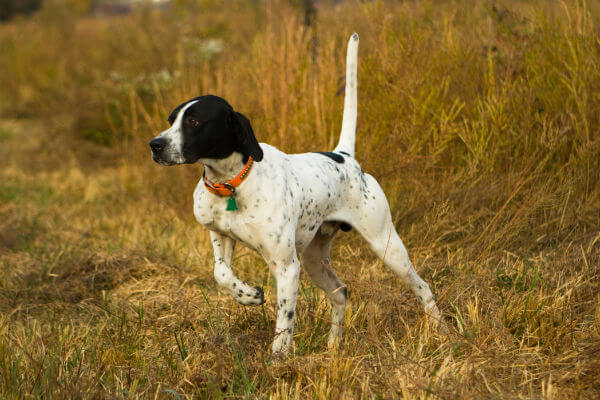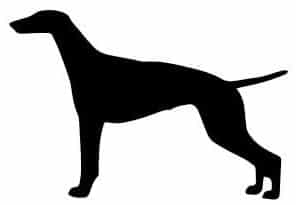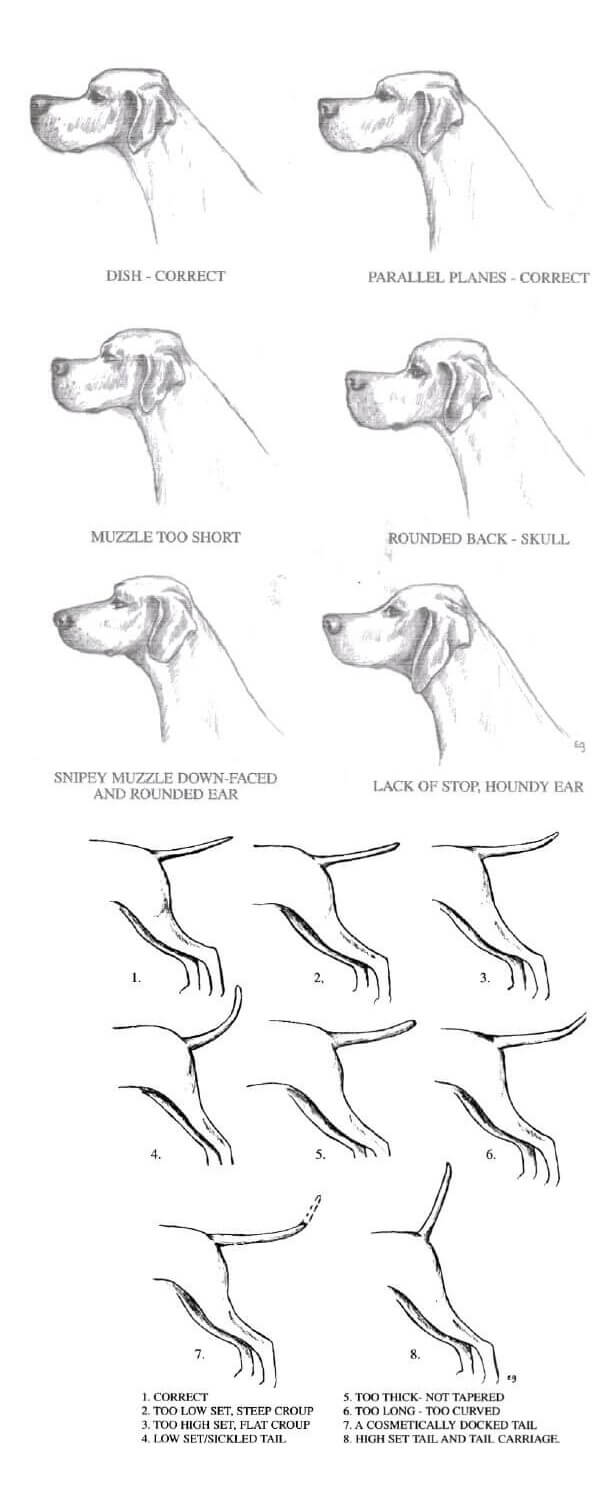
Home » How to Judge the Pointer Dog Breed

How to Judge the Pointer Dog Breed
As breeders, we get to gaze for hours trying to weigh pluses and minuses of each of our Pointer dogs. You, as a judge, have a two-minute period… and with good education, you may still find it difficult to filter through those pluses and minuses in two minutes. Where must you start?
“Start With the First Paragraph of the Standard!”
How to Judge the Pointer – General Appearance: The Pointer is bred primarily for sport afield; he should unmistakably look and act the part. The ideal specimen gives the immediate impression of compact power and agile grace; the head noble, proudly carried; the expression intelligent and alert; the muscular body bespeaking both staying power and dash. Here is an animal whose every movement shows him to be a wide-awake, hard-driving hunting dog possessing stamina, courage, and the desire to go. And in his expression are the loyalty and devotion of a true friend of man.
How to Judge the Pointer – Gait: Smooth, frictionless, with a powerful hindquarters’ drive. The head should be carried high, the nostrils wide, the tail moving from side to side rhythmically with the pace, giving the impression of a well-balanced, strongly-built hunting dog capable of top speed combined with great stamina. Hackney gait must be faulted.
How to Judge the Pointer – Balance and Size: Balance and over-all symmetry are more important in the Pointer than size. A smooth, balanced dog is to be more desired than a dog with strongly contrasting good points and faults. Hound or Terrier characteristics are most undesirable. Because a Sporting dog must have both endurance and power, great variations in size are undesirable, the desirable height and weight being within the following limits:
Dogs: Height – 25 to 28 inches, Weight – 55 to 75 pounds
Bitches: Height – 23 to 26 inches, Weight – 44 to 65 pounds
Under Gait: The Pointer gives the impression of a well-balanced and strongly built hunting dog.
Under Balance and Size: It again refers to balance and over-all symmetry.


How to Judge the Pointer – Temperament: The Pointer’s even temperament and alert good sense make him a congenial companion both in the field and in the home. He should be dignified and should never show timidity toward man or dog.
How to Judge the Pointer – Head: The skull is of medium width, approximately as wide as the length of the muzzle, resulting in an impression of length rather than width. Slight furrow between the eyes, cheeks cleanly chiseled. There should be a pronounced stop. From this point forward the muzzle is a good length, with the nasal bone so formed that the nose is slightly higher at the tip than the muzzle at the stop. Parallel planes of the skull and muzzle are equally acceptable. The muzzle should be deep, without pendulous flews. Jaws ending square and level; should bite evenly or as scissors. Nostrils are well-developed and wide open.
How to Judge the Pointer – Shoulders: Long, thin, and sloping. The top of the blades are close together.
How to Judge the Pointer – Front: Elbows are well-let-down, directly under the withers and truly parallel so as to work just clear of the body. Forelegs are straight and with oval bone. Knee joint is never to knuckle over. Pasterns are of moderate length, perceptibly finer in bone than the leg, slightly slanting. Chest is deep rather than wide, must not hinder free action of forelegs. The breastbone is bold, without being unduly prominent. The ribs are well-sprung, descending as low as the elbow-point.
How to Judge the Pointer – Back: Strong and solid with only a slight rise from croup to top of shoulders. Loin is of moderate length, powerful, and slightly arched. Croup falling only slightly to base of tail. Tuck-up should be apparent, but not exaggerated.
How to Judge the Pointer – Tail: Heavier at the root, tapering to a fine point. Length no greater than the hock. A tail longer than this or docked must be penalized. Carried without a curl, and not more than twenty degrees above the line of the back; never carried between the legs.
How to Judge the Pointer – Hindquarters: Muscular and powerful with great propelling leverage. Thighs are long and well-developed. Stifles are well-bent. The hocks are clean; the legs are straight as viewed from behind. Decided angulation is the mark of power and endurance.
How to Judge the Pointer – Feet: Oval, with long, closely set, arched toes, well-padded and deep. Catfoot is a fault. Dewclaws on the forelegs may be removed.
How to Judge the Pointer – Coat: Short, dense, smooth with a sheen.
How to Judge the Pointer – Color: Liver, lemon, black, orange; either in combination with white or solid colored. A good Pointer cannot be a bad color. In the darker colors, the nose should be black or brown; in the lighter shades it may be lighter or flesh-colored.

Please visit the American Pointer Club website (www.americanpointerclub.org) to view the complete Illustrated Standard and the Pointer PowerPoint presentation. Submitted by Susan Bleckley, Judges Education Chair, 714- 321-1245, susanbleckley@gmail.com.
Judging the Pointer with the Same Conscientious Evaluation as a Breeder
By Susan Bleckley
